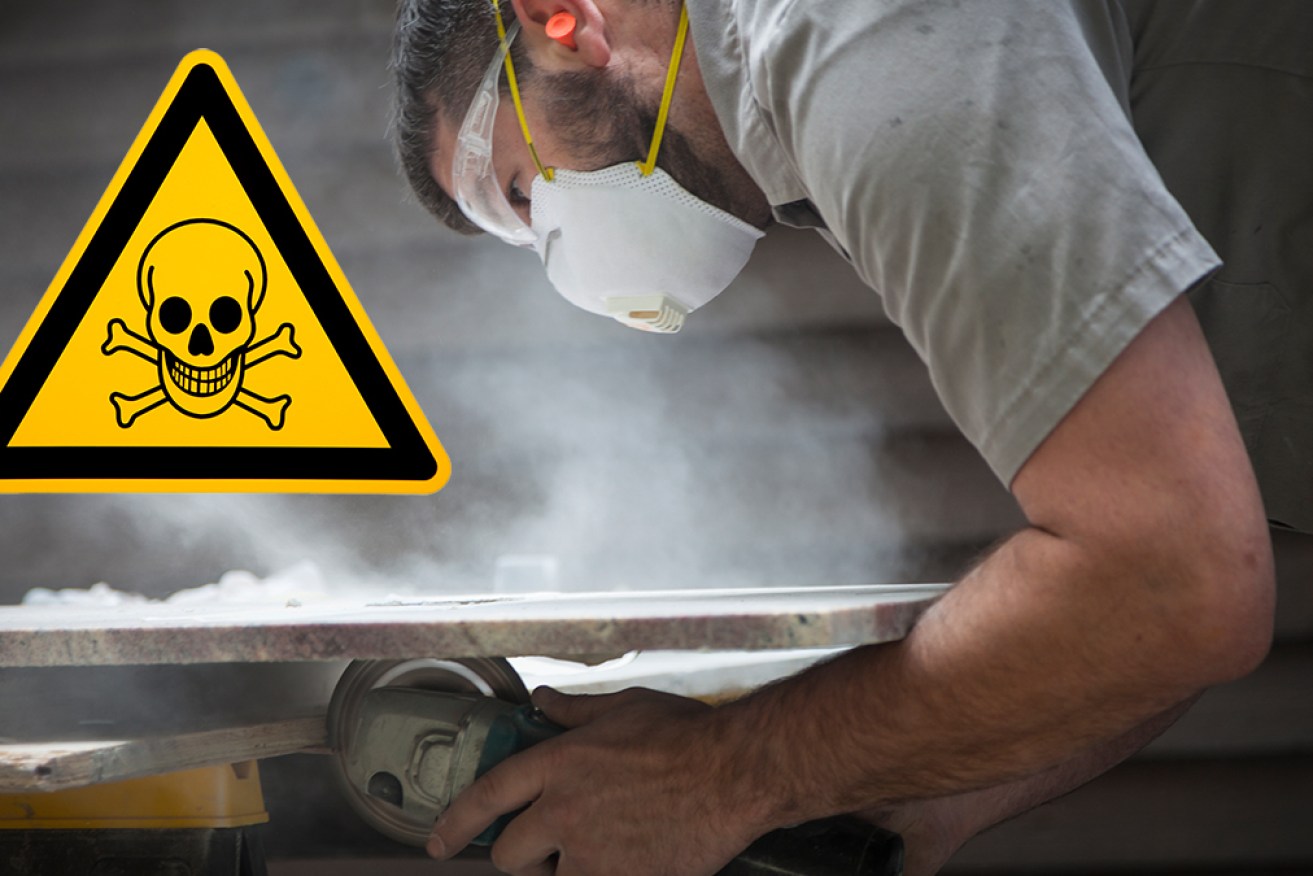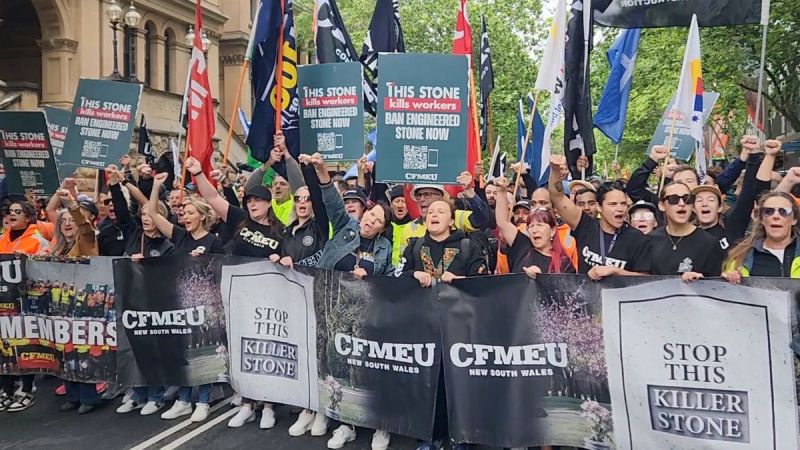Extract from The New Daily

Engineered stone bench tops are a danger to those who work with them. Photo: TND/Getty.
On Friday, the Safe Work Australia report into engineered stone products was released, calling for an outright ban.
Comparisons between silica contained within those engineered stone products and the deadly dust asbestos have now risen to the fore with unions and medical experts also calling for a ban on the use of engineered stone.
But regrettably these comparisons are nothing new. In fact, it has at times been the other way around, with the rise in asbestos related risks in the mid-20th century being compared then to the already well-known dangers of silica dust.
A very grave risk
In 1950, the Western Australian Commissioner for Public Health reported the “very grave risk” of asbestos by making comparisons to silicosis.
Silicosis had by then been widely recognised across Australia and the developed world as a serious and deadly industrial disease.
The seriousness of silica and its life-threatening consequences for workers was so well known that 30 years prior New South Wales introduced the Workmen’s Compensation (Silicosis) Act. It was a specific piece of legislation to address the uniquely dangerous effects of silica.
Way back in 1920
It was also that Act which established a scheme that was later used to provide compensation for workers affected by asbestos-related injuries, and which empowered the Dust Diseases Board in 1968 to extend coverage to certain types of workers who would be exposed to the deadly asbestos mineral fibres.
But it didn’t start there either. Awareness about the dangers of silica dust and silicosis reaches back even further.
In 1911 the Queensland government established a royal commission to examine the extent to which mining conditions “contribute to pulmonary diseases among miners”, with the disease at the centre of that inquiry being “Miners’ Lung” or “Miners’ Silicosis”.
The royal commission reported that the incidence of silicosis correlated with the amount of quartz mining. Quartz, according to the report, contained extremely high levels of silica, and miners who used power tools to drill or work on it were at a far greater risk of contracting a related lung disease.
Stonemasons suffer
Fast forward a couple of decades and, in 1937, a union representing stonemasons made an application to the then Commonwealth Court of Conciliation and Arbitration, a predecessor to what we now know as the Fair Work Commission, to have the hours of stonemasons reduced from 44 to 40 hours per week in response to the health hazards presented by working with stone containing high amounts of silica.
Medical reports provided to the court in that case concluded “the presence of a definite hazard from silicosis which predominates among those masons using sandstone mainly”. The report also said that “silicosis does occur among stonemasons as a result of their occupation, but almost entirely among those handling sandstone on account of its high silica content.”

A CFMEU protest in Sydney campaigning for a ban on engineered stone. Photo: AAP
In his decision to support the reduction of hours for stonemasons working with sandstone, Justice Piper relied on the conclusions of the International Labour Office contained in a 1930 “Occupation and Health” report which determined that “there is now good reason therefore to estimate the severity of a silicosis hazard from the percentage of free silica in the dust”.
The report also found that “the danger from dust is strictly in accord with the composition of the stone”.
But what is sandstone, and what does it have to do with bench tops?
Well, according to the Geological Society of the UK, “most sandstones are made up largely of quartz grains” – and quartz is the primary ingredient in many modern bench tops.
In February 2023 a leading distributor of the engineered stone products issued a public statement which opened with “a lot has been said about ‘engineered stone’, also known as quartz”.
That statement went on to say, “it is a tragedy that stonemasons, many of them young, have contracted silicosis in the stone industry”.
Another distributor of the product describes engineered stone as “a composite slab of stone that is generally made from around 90 per cent crushed quartz”.
Time to act
Recently a lot has been said about “engineered stone”. Even more has been said over the last 100 years about the serious and sometimes fatal risks posed by working with the quartz mineral from which the product is constituted.
Because, just like asbestos, the dangers of quartz and the silica contained within it are well known and well documented. What magnifies this tragedy is the time that has been allowed to elapse before decisive action has been taken to stop it.
In the early 20th century, the focus was on mine workers who were first exposed to the deadly silica. In the 1911 Queensland royal commission, workers who had worked gold mines in Victoria, NSW and Queensland gave evidence about the health impacts they and their workmates suffered when using power tools on quartz deposits in the mines.
A short while later, workers in the asbestos mines of Western Australia were likewise beginning to show the devastating scale of the health impacts they suffered working with the raw asbestos material.
Later, and again just like silica, health effects began to emerge among the workers that manufactured and installed the products which contained asbestos fibre.
And despite all that early knowledge and awareness, an Australia-wide ban on the use of asbestos containing products did not come into effect until December 31, 2003. That was a full 20 years after James Hardie ceased manufacture of the asbestos-containing cement sheet boards that were installed in homes around the country.
With the recommendations of Safe Work Australia clearly calling for an outright ban of the product, and now that we are already on the wrong side of history, there can be no time left to delay action on a proven killer.
Scott Riches is a former union official with the Electrical Trades Union Victorian branch, and a practising employment lawyer. He is also a volunteer in the employment clinic at the Fitzroy Legal Service.
No comments:
Post a Comment